10+ ways to visualize your martech stack
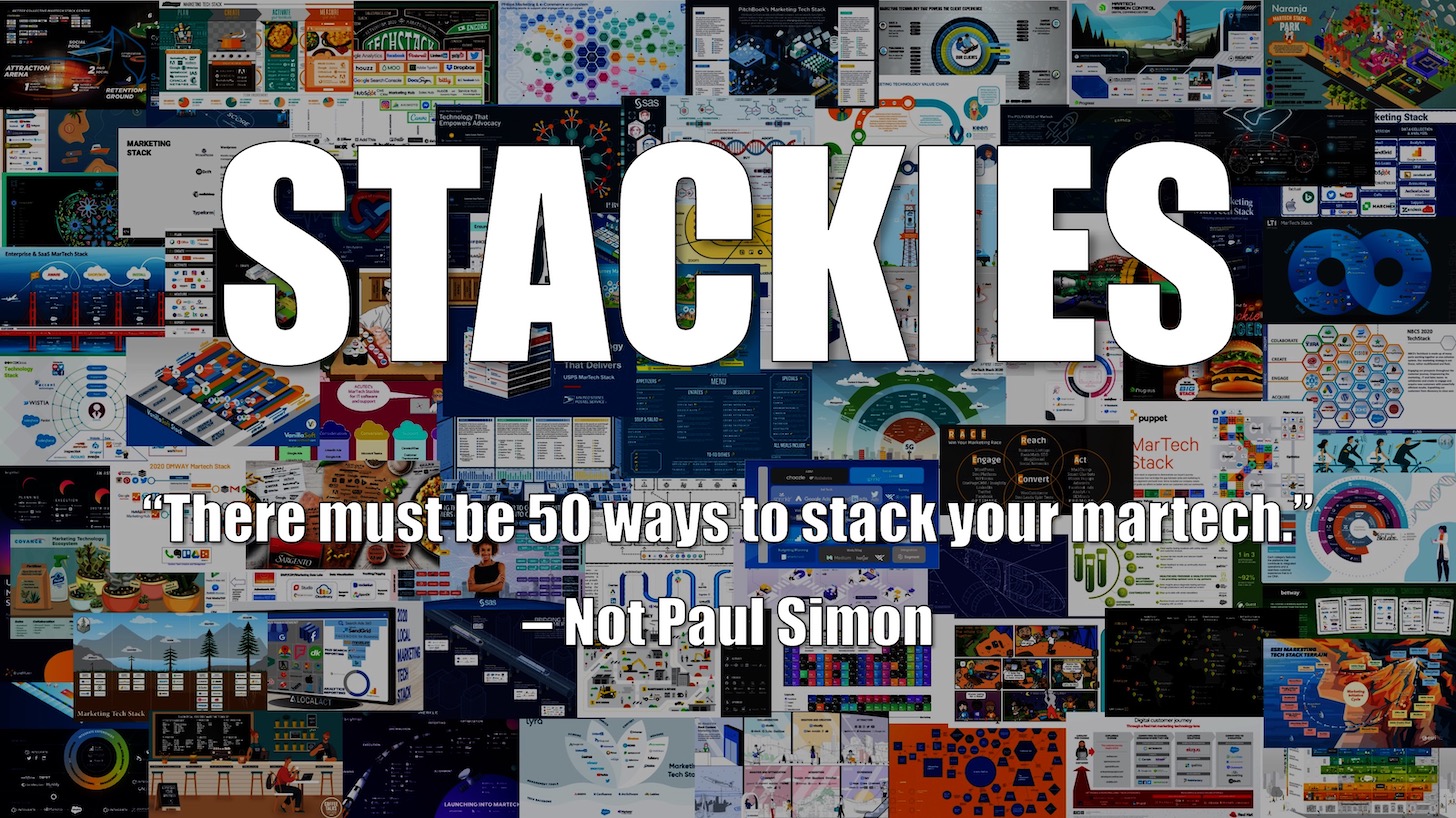
This is the 8th yr we’re operating The Stackies. It is an awards plan that invites entrepreneurs to share a solitary slide illustrating their martech stack — the diverse apps and platforms they use and how they conceptualize them functioning alongside one another.
I’d persuade you to participate (deadline for entries April 29). It is a wonderful way to add to our community’s comprehension of how martech suits into the purpose and stream of present day marketing.
On the other hand, even if you never share your stack outside the house the partitions of your business, illustrating it can be an amazingly useful exercising to much better realize it — and be able to reveal it to other stakeholders.
So what is the greatest way to illustrate your stack?
Turns out there are numerous means, each bringing a different lens. Acquiring reviewed hundreds of entries to The Stackies above the yrs — here are all of them from 2015, 2016, 2017, 2018, 2019, 2020, and 2021 — I’ve distilled 10 styles that I have noticed on their personal and in mix together.
1. Seller Group Map
Typically making use of the taxonomy from our marketing technological innovation landscape, martech applications are structured into their item categories and subcategories. It displays your stack by the lens of a vendor market map and identifies the products and solutions you have chosen. This is a good way to take a look at your general stack stock and demonstrate the span of martech methods.
Here’s an illustration from SAS and their 2021 Stackie entry:
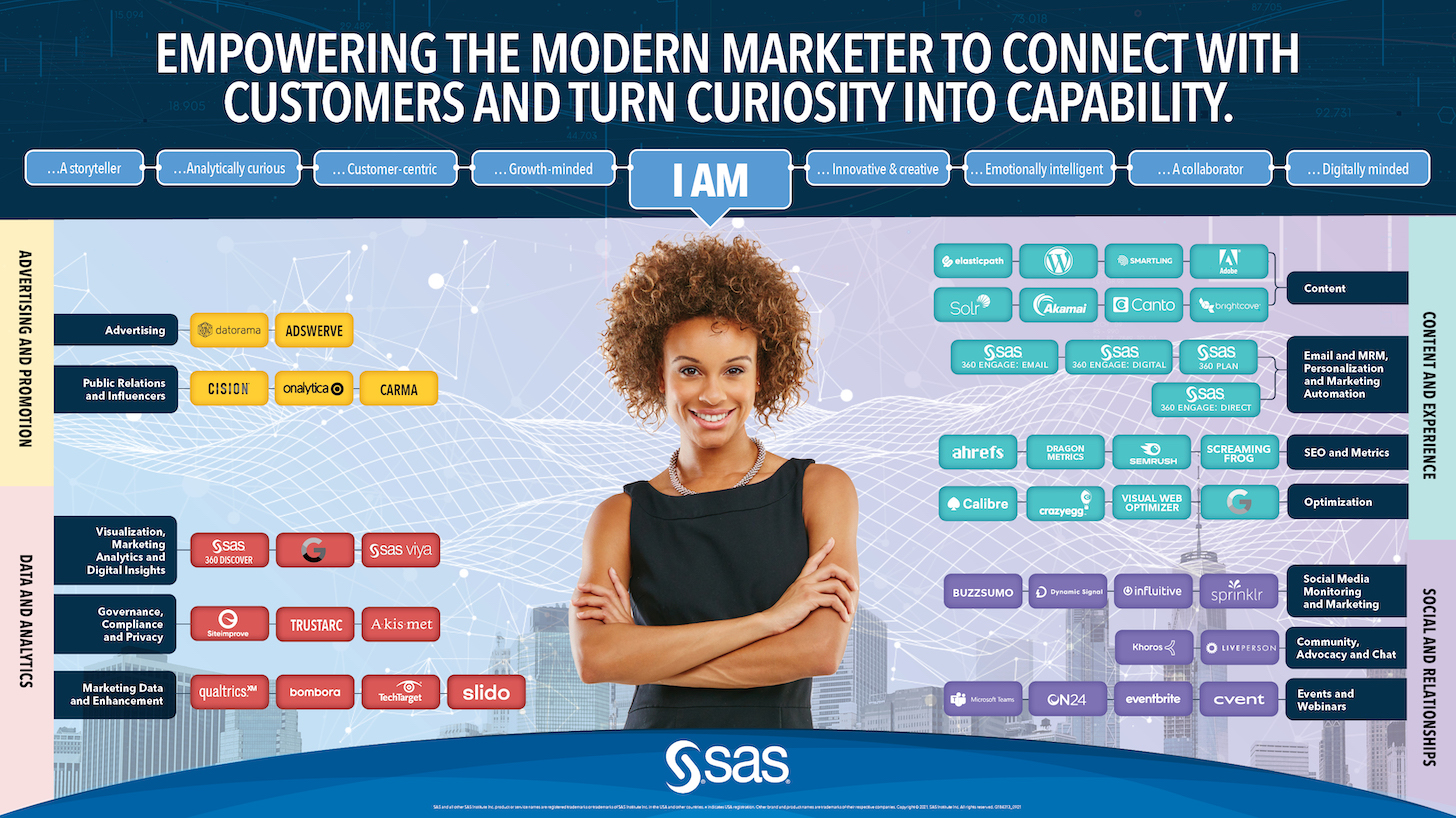
2. Purchaser Journey Map
An additional typical design is to align your martech stack in opposition to distinctive phase of the customer’s journey. Typically for entries to The Stackies, the journey is simplified into 4-5 phases, these types of as Find, Look at, Invest in, Onboard, and Increase.
This fantastic instance from Juniper Networks and their 2021 Stackie entry illustrates two dimensions: the consumer journey horizontally and the vendor groups utilised vertically:
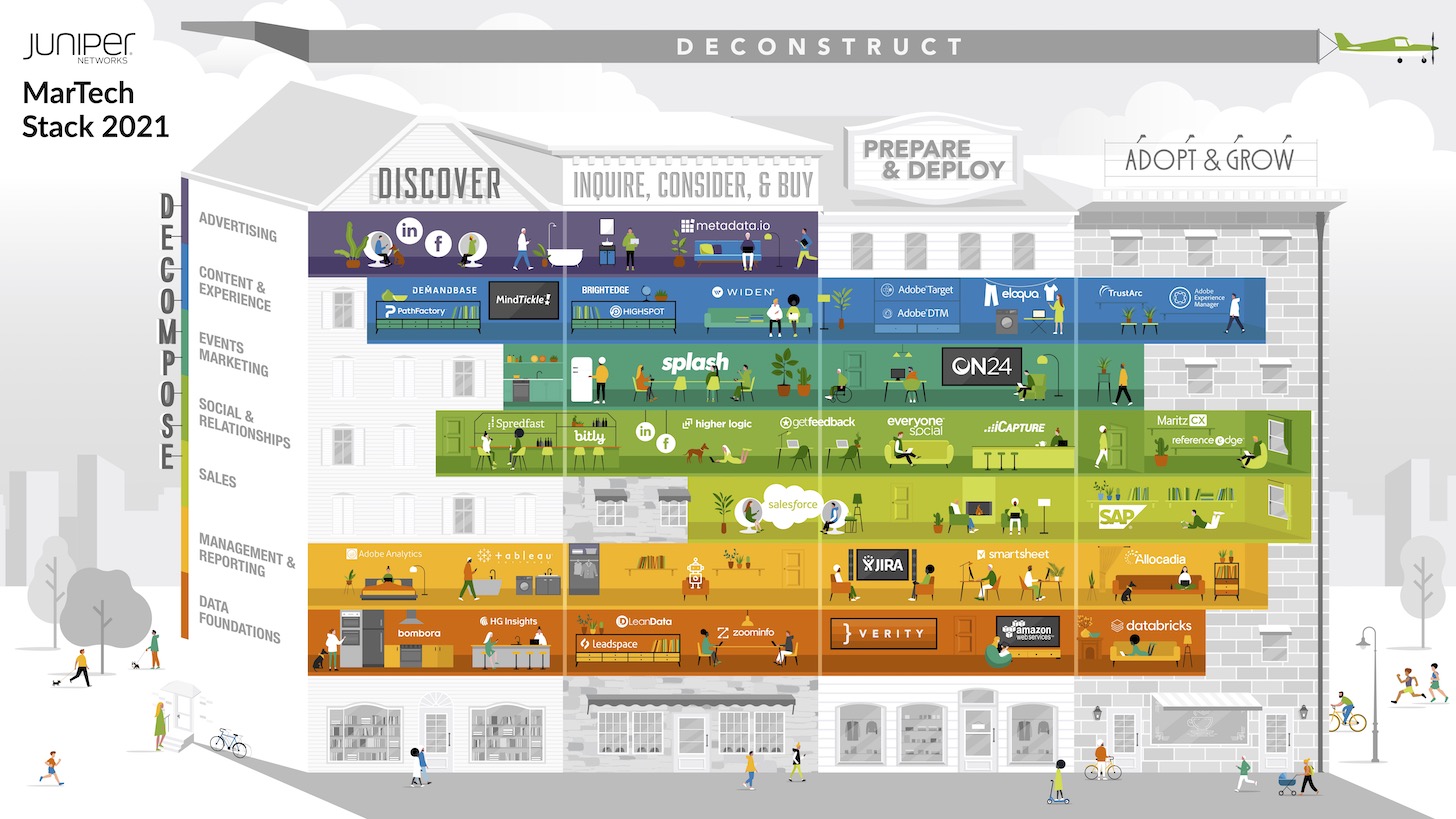
3. Back-Stage vs. Entrance-Phase
Another way of hunting at your stack is as a result of a theater metaphor: back-stage and entrance-stage apps and platforms. Entrance-stage applications specifically contact the purchaser — e.g., world-wide-web experiences, e-mail campaigns, social media engagement equipment, marketing, etcetera. Back again-phase apps are utilised to serve interior stakeholders, this sort of as analytics, organizing, asset administration, efficiency, etc.
This is an elegant instance from Red Wing Shoes and their 2017 Stackie entry, with back again-stage to front-stage categorization together the vertical obtain and client journey phase along the horizontal axis:

4. Operate or Part-Dependent Map
Though martech stacks can be rather massive, any just one man or woman in the advertising office is not likely to have to discover all of the apps within it. Distinctive roles inside of advertising and marketing will use unique instruments. So a different handy way of mapping your martech stack is to team applications by the roles or functions that use them. This is reveals the “who” dimension of your stack, which is helpful to see the interrelation amongst applications, skills, and outcomes.
This case in point from Bigtincan’s 2019 Stackie entry illustrates 3 primary roles: net administration, advertising and marketing automation, and content material marketing:
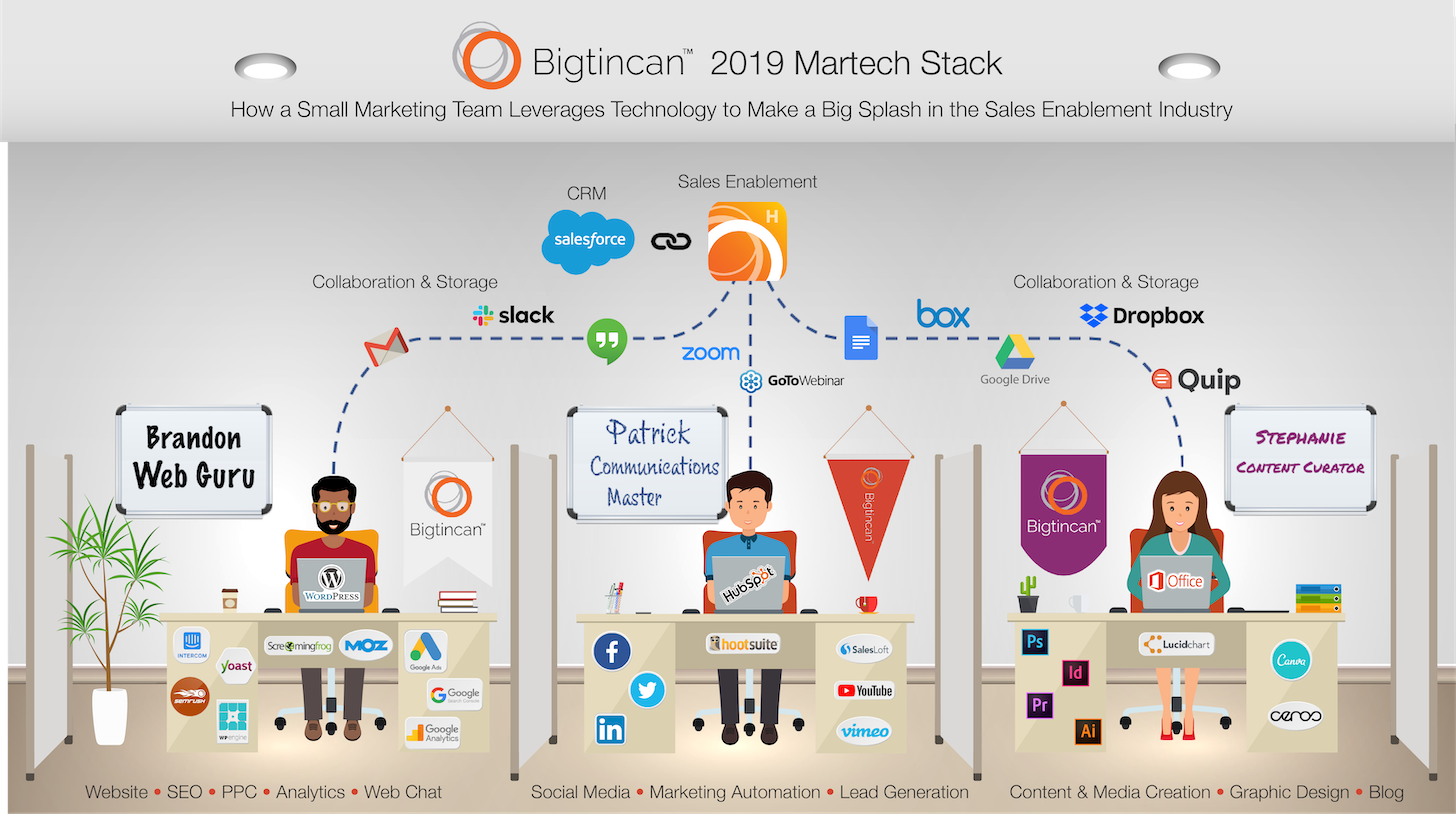
5. Stage Answer/Platform Ecosystem Map
Integration is essential to an successful martech stack. An additional excellent way to visually analyze your stack is to present the system(s) that are the gravitational centre(s) of your martech stack and which professional apps combine to every single of them. It’s an ecosystem see of your stack.
This case in point from Poly’s 2020 Stackie entry in fact captures five unique proportions, like relative investment, paid/acquired/owned options, seller class — and identifies platforms, integrated specialist apps, and stand-alone point solutions:

6. Utilization Map (Relative Time in Applications)
Some martech applications are utilized consistently, as an integral component of marketing’s day-to-day operations. Other applications, even so, are far more specialised and applied significantly less often. This doesn’t suggest they’re not worthwhile. They just have a time and position for their goal. Figuring out heavily-utilized primary applications vs. evenly-employed instruments experts can be a further insightful way to comprehend the composition of your stack.
This instance from Airstream’s 2019 Stackie entry cluster applications primarily by their use situation — planning, inventive, engagement, seller channel, and measurement — but the peak of the pine tree icons signifies the relative time marketers commit interacting with every resource:
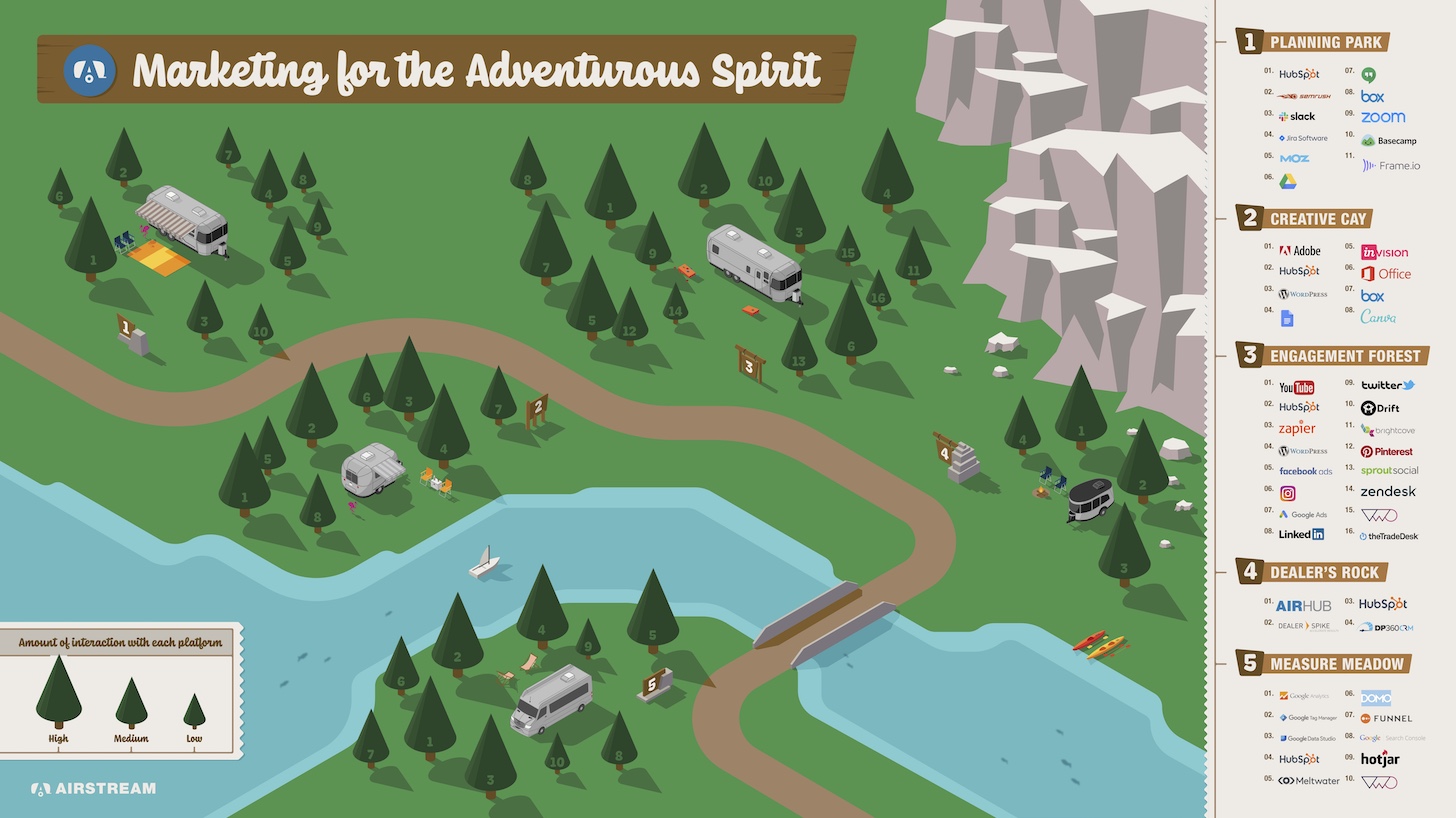
7. Relative Degree of Automation
When considering the amount of money of time that people commit engaged with various applications in your stack, it is an exciting lens to study how automated all those applications are. Which resources are utilised largely manually? Which kinds have substantial automations? This see can be helpful the two to have an understanding of the marriage concerning instruments and advertising system and operations. It can also aid determine opportunities to automate.
Automation is the most significant frontier in Major Ops in my feeling.
This example from Paychex’s 2019 Stackie entry maps out their martech apps on two proportions: various advertising and marketing capabilities and the degree to which they are automated:

8. Speed Layering of Platforms and Applications
More than a decade back, as tech stacks in general — not just martech — were being expanding speedily, Gartner proposed a way to arrange them by “tempo layer.” They advised three levels: systems of report, techniques of differentiation, and programs of innovation.
Programs of document must be really secure and have a gradual speed of alter. They’re the platforms upon which other computer software and products and services rely. Techniques of differentiation embody the procedures and encounters that make your business enterprise unique. They change more routinely, but are even now fairly steady. Programs of innovation are far more experimental, the place wherever new abilities can be designed and piloted immediately.
Just one of the very best Stackie entries was this one particular from Microsoft in 2017, which mapped resources alongside the infinite loop of shopper journeys, but then also separated them into Gartner’s three speed levels:

9. Evolution of Martech Instruments Over Time
Martech stacks really do not stand continue to. New tools are added. Old instruments are changed. This is part of the pure evolution of a small business as it grows — and as the broader promoting and martech ecosystem proceeds to transform about it. It can be handy to look at your martech stack through the lens of its modifying app stock about time.
This case in point, sent in by reader John Schott in 2017, exhibits a 5-12 months journey of a little financial solutions small business:

10. Related Capabilities Map
At the intersection of groups and tools, abilities are produced. Relatively than on the lookout at your stack by the lens of vendor categories, you can set up a watch all around various capabilities, these kinds of as marketplaces, user-produced information, content material syndication, qualitative and quantitative study, etc. Mapping these abilities in clusters, to exhibit their adjacencies and relationships with every other gives you a photo of the ecosystem about your stack.
This 2021 Stackie entry from Philips is a wonderful case in point:

Other Techniques to Map Your Stack
Of program, there are a lot of other means to visualize other dimensions of your stack.
For occasion, you may well organize it about aggregation systems in your martech stack. How are you horizontally aggregating knowledge, workflow, experience, and governance throughout several distinct applications, facts sources, and customer touchpoints? Which tools are you making use of to vertically combine those levels in particular domains, these as CRM?
Alternatively, you could possibly illustrate your stack to emphasize the diploma of customization within just unique applications and platforms. They could possibly assortment of purely out-of-the-box commercial apps, to packaged merchandise that have been custom-made or prolonged with your possess code, to completely tailor made applications that are exclusive to your business.
Each individual of these distinct methods can give you different insights into the mother nature of your stack — and help you communicate them to stakeholders across your group.
What does your martech stack glimpse like?
Reminder: Even if you never enter The Stackies on your own — while we definitely hope you do — really do not ignore to sign up for the totally free webinar on #MartechDay, May perhaps 3. We’ll be unveiling the new 2022 martech landscape, releasing a State of Martech report, and celebrating the entrants and winners of this year’s Stackie Awards.
